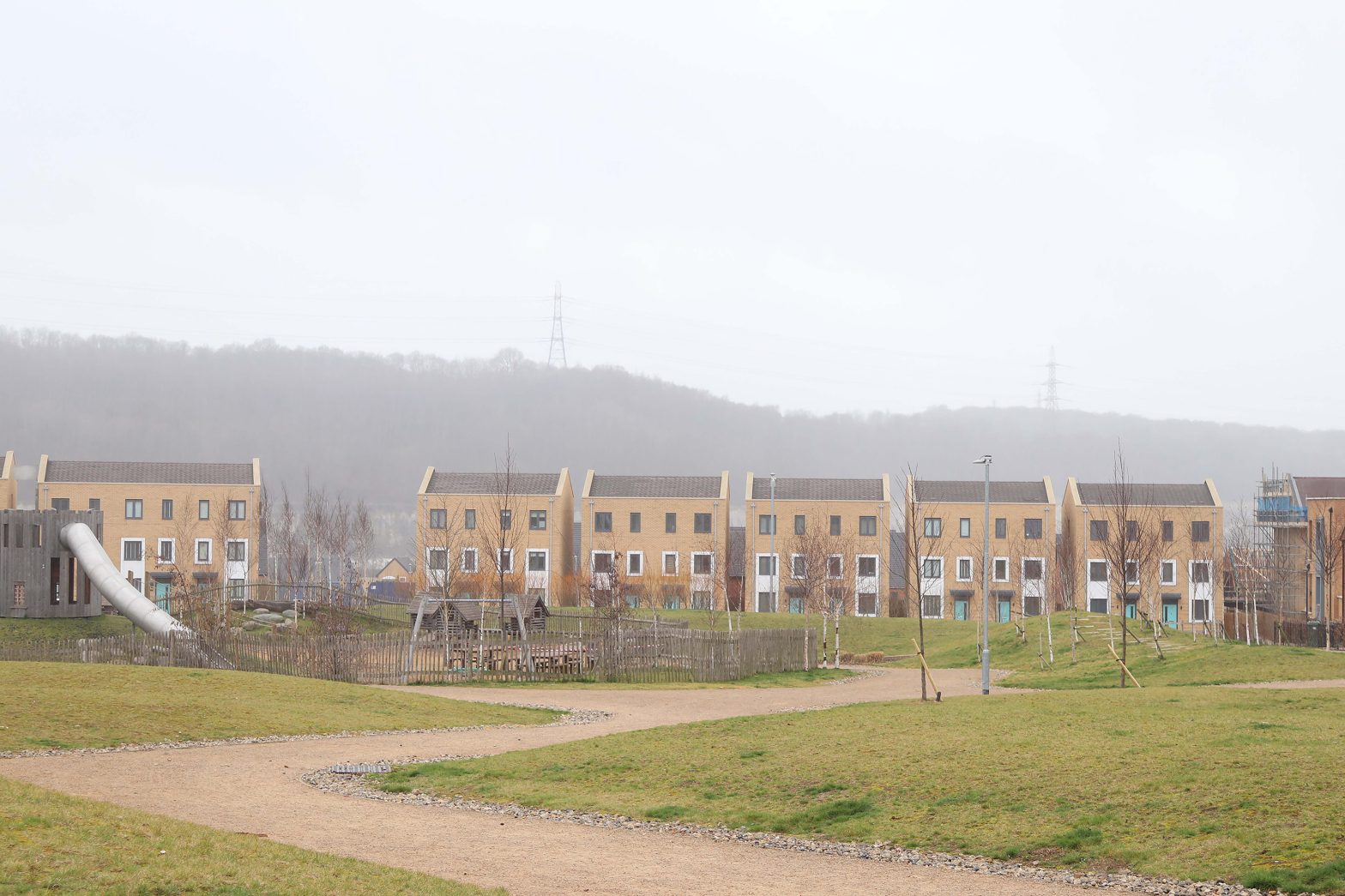Photography students from North Kent College Creative Studios respond to the local landscape and community of Ebbsfleet
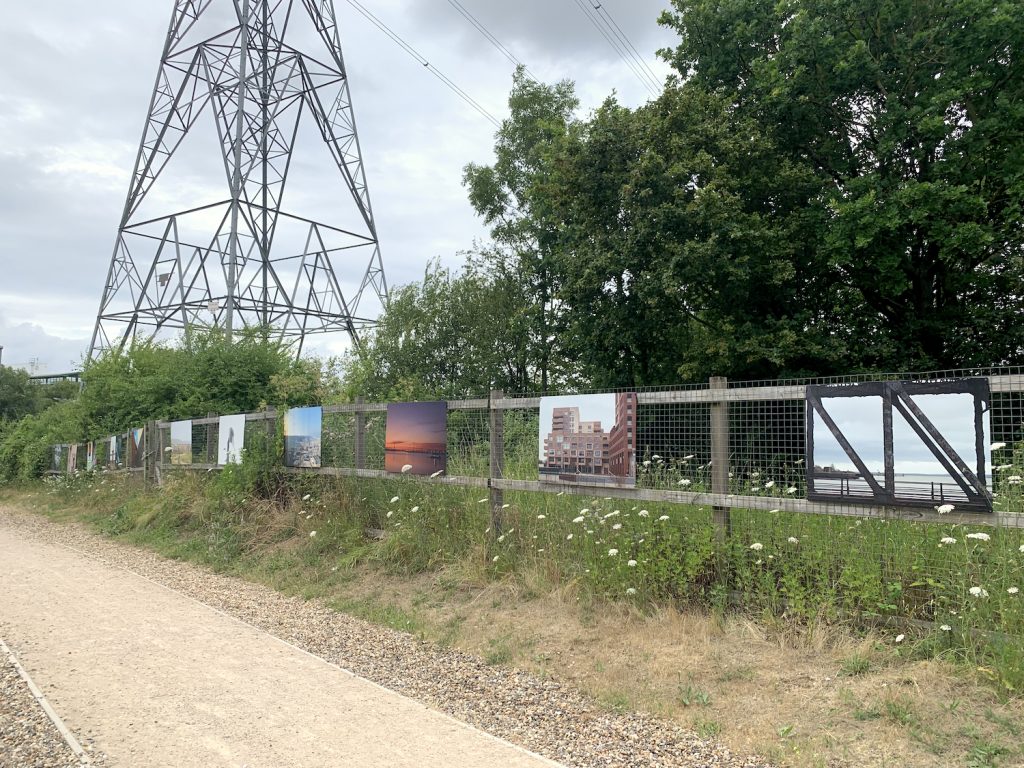
Photography students from the Creative Studios at North Kent College were invited to respond to Ebbsfleet, the local landscape and community, and a selection of their images have been selected to be publicly displayed in Ebbsfleet near Ebbsfleet International train station.
For location, follow google directions HERE.
The exhibit includes photos by Sophie Atlee, Lily Tappenden, Rosie Sherwood, Alastair Caiger, Katie Chapman, Kelsie Andrew, Lewis Storey, Day Taylor, Amber Reville, Nikki Hayter, and Sarah Stanley.
Exhibition dates: 8 July – 31 August 2023
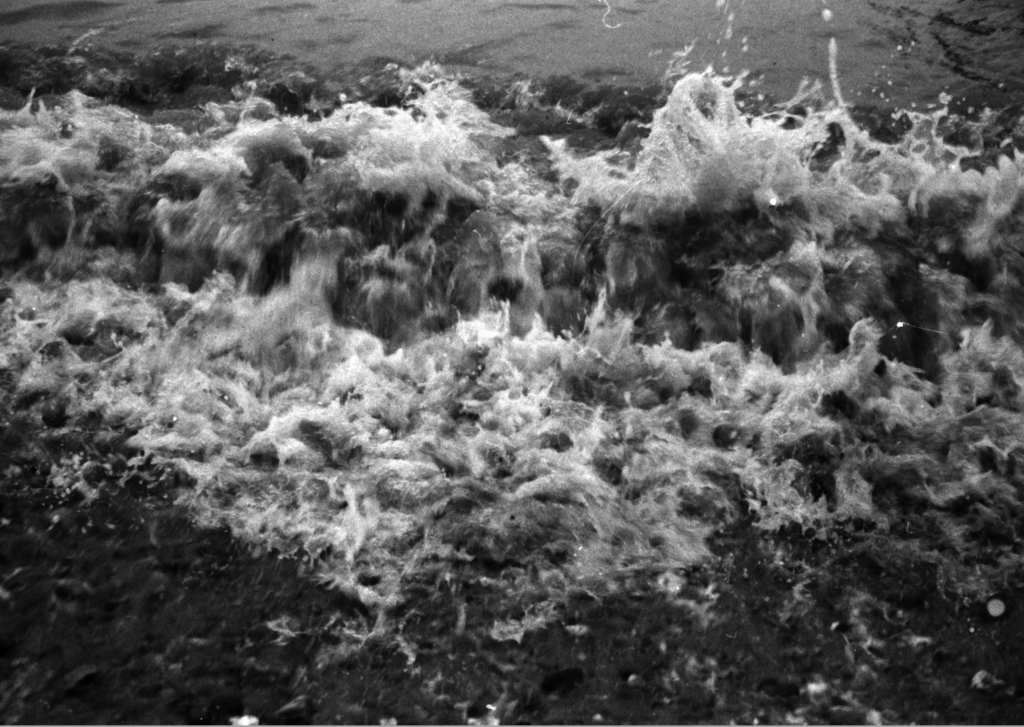
Sophie Atlee is a 4 Level Photography student at North Kent College, progressing onto LCC to study documentary photography.
‘I’m interested in using analogue processes and have created a documentary that traces the coastline at Allhallows and the environmental issues it faces over the coming decade. On the Hoo Peninsula in Kent, Allhallows Beach is a sandy beach with a view of the estuary of the river Thames. The closest beach to downtown London is Allhallows Beach, which is situated between the rivers Medway and Thames and provides options for boating, walking, and wildlife enthusiasts. However, there could be a massive transition in the next 30 years – it could all be underwater due to the climate crisis and the rising water levels around the world. Using this as an influence, I wanted to create different images taken on black and white film to then destroy them further either accidentally or purposely to create an image in which would show an abstract side of this place.’
‘The Ebbsfleet development inspired me to look at different places that are going through change. Due to the climate issue we face in this world, the beaches in this country are going through a lot of bad transitions. I also wanted to document a beach that holds a lot of special, childhood memories for me.’
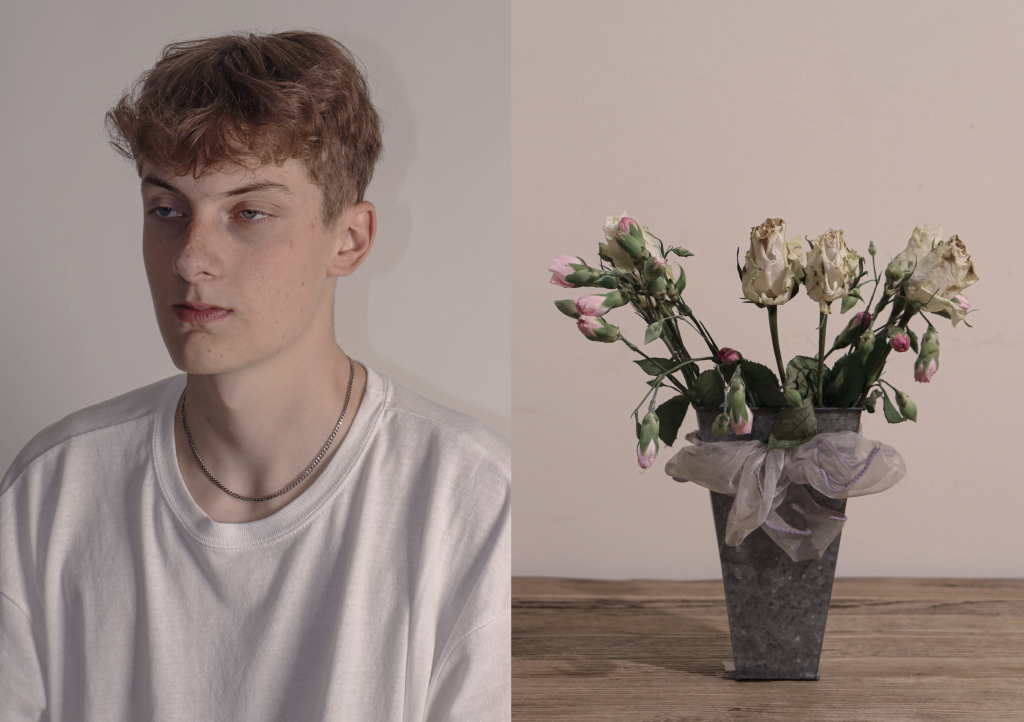
Lily Tappenden studied level 4 Photography at North Kent College.
‘This particular piece of work is about capturing the transition from life to death, through cut flowers and the impact humans have on the environment. I used deadpan style and colour theory in order to convey to the audience the raw sadness that our planet, like the flowers, is slowly dying.’
‘My work was inspired by our trip to Ebbsfleet, as I appreciated the already used space was productively being put to use by providing eco friendly housing and promoting public transport, therefore doing less damage to the environment.’
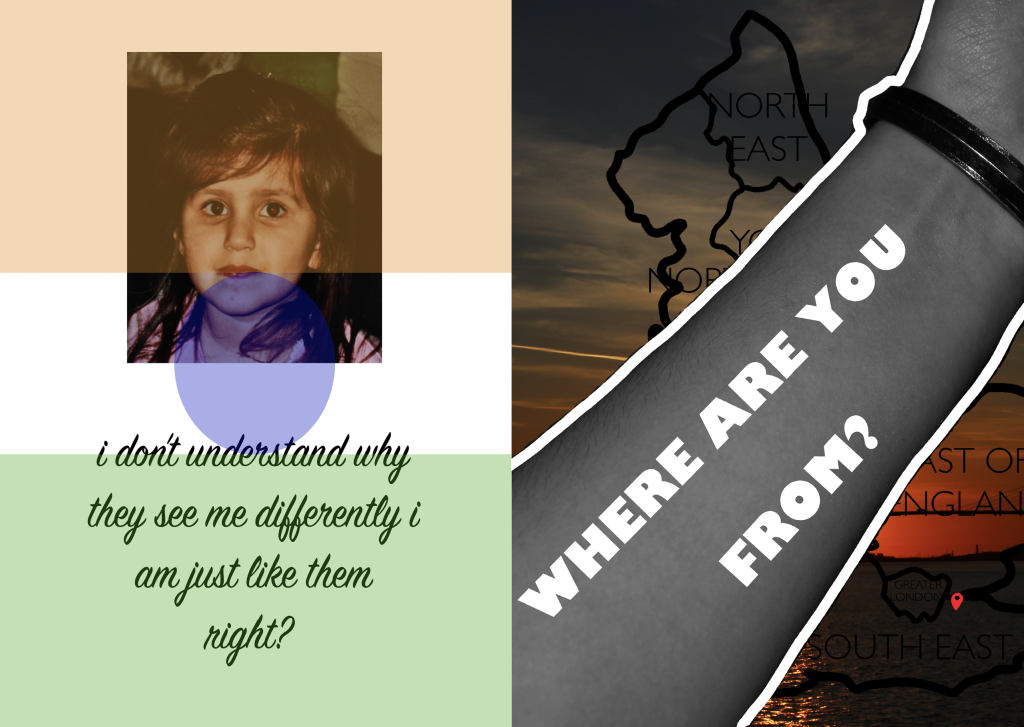
Rosie Sherwood is a level 4 Photography student a North Kent College in Dartford. They are interested in feminist issues and how these might be incorporated into contemporary forms of advertising and commercial, cultural and still life photography.
‘The constant question I was asked growing up became increasingly annoying. Never realising until I was older how rude and racist it was. I feel like many people can relate to this, as it is something many people of colour deal with on a regular basis. I created this work in response to my own experience, but also recent news stories seen in the media. Through my work, I wanted to firstly express why it is unacceptable to ask this question, and secondly to highlight that the answer given is often questioned and unsatisfactory. My work has been inspired by the culture and the diversity of Ebbsfleet and the surrounding areas, and how, if we try, we can all learn from each other and develop new ways of thinking. I am interested in how much people can relate to the work I have produced, as I feel it will strike a cord with many local people.’
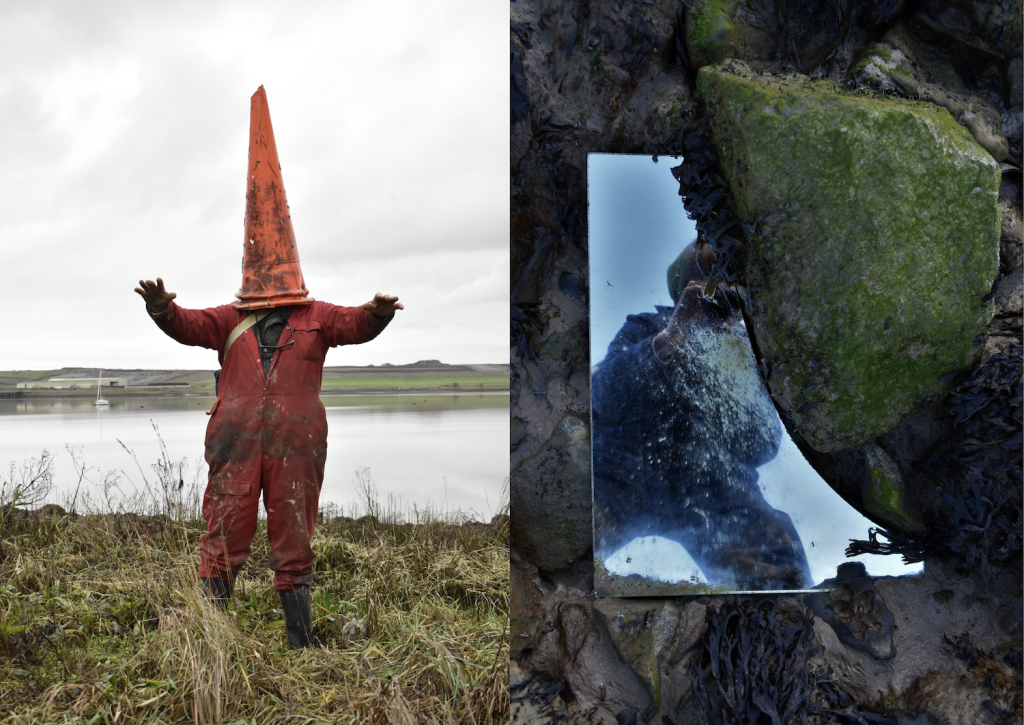
Alastair Caiger is a Level 4 Foundation Diploma Photography student at North Kent College. Specialising in documentary photography, he’s been focusing on documenting various pastimes and self-publishing his own series of photobooks.
‘Larking is a series of photographs that document the niche hobby of Mudlarking. Shot in various locations along the Thames Estray, I wanted to show both the beauty and the pleasure. Such as the historic finds we extract from the mud, the relationship between me and my father, our interactions, playing with the objects we find and the unusual environments we happen to come across. Having been born into a family of archaeologists, artefacts of the past were something my father grew up with – I love anything and everything old. I have been mudlarking many times, but it had only dawned on me recently what beautiful photographs I could make from these objects and the changing light around me. I hope my work reaches out to the viewer, giving them an insight into mudlarking, the weather and landscape, but also the relationship I share with my dad.’
‘Larking relates to Ebbsfleet in the sense that it shows how our environment is constantly changing. The River Thames changes the shape and formation of the landscape by eroding the embankment. Likewise, Ebbsfleet demonstrates a change in landscape, but instead by erecting new buildings and transforming the land.’
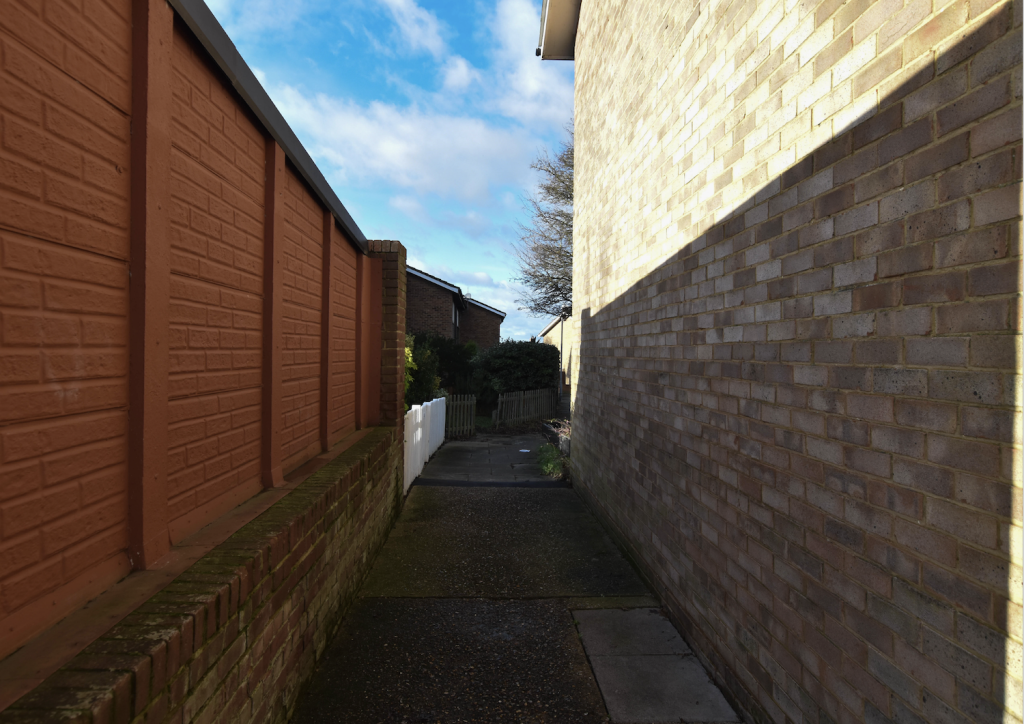
Katie Chapman is a level 3 photography student at North Kent College interested in landscapes.
‘I decided to take this image because I wanted to show change/ transition in an image. My alleyway photograph shows the beginning, the middle and the end, which is a transition. It’s the middle between two places.’
‘Looking at the landscapes around Ebbsfleet, it was easy to see how the whole area was going through a ‘transition’ and how I could correlate my work with this idea. The landscape is shifting and changing, and so is the community, this inspired me to document my local area and the communal spaces we share.’
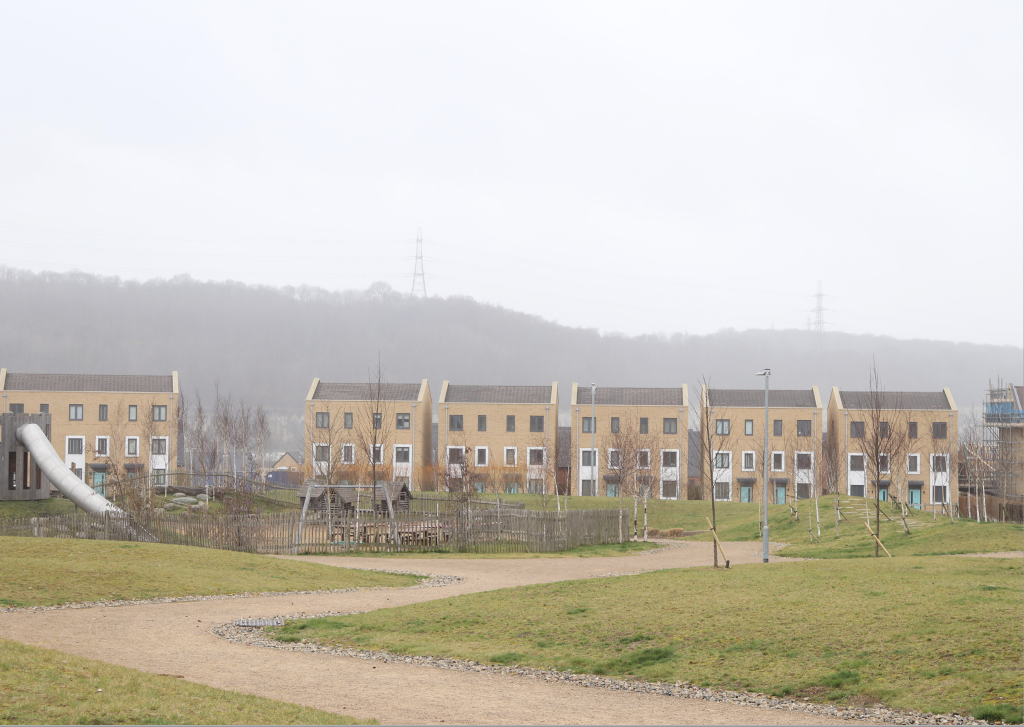
Kelsie Andrews studied level 4 photography at North Kent College. She has a keen interest in landscape photography, nature and the costal towns in Medway and East Kent.
‘My project is based around Ebbsfleet; a garden city housing development and the coming together of a new community. I spent time in the area, walking around and taking in the atmosphere. I started to document all the different types of buildings, the similarities and differences in architecture and the way the light would travel and cast shadows throughout the day. I hope this image speaks to prospective inhabitants of Ebbsfleet, giving them a blank canvas to imagine their new way of living. Ebbsfleet inspired me to document the transition from it being a chalk quarry to becoming a Garden City housing development.’
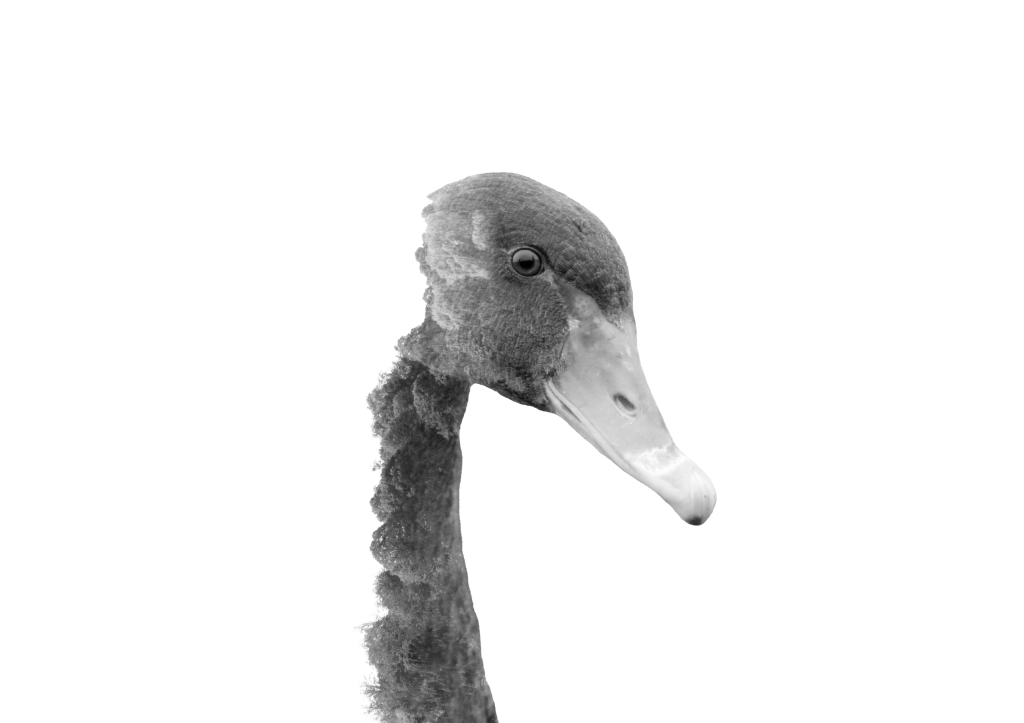
Lewis Storey is a level 3 photography student at North Kent College in Dartford. They are interested in wildlife photography and the conservation of endangered species.
‘The theme for this project was transitions. To create a link between my work at the theme, I made a double exposure edit of a black swan and a British tree line. I chose the black swan as originally they were native to Australia, but after escaping captivity, they have started to be spotted across the UK. I stumbled across this black swan while on a walk in my local park at Danson. I was extremely lucky as the swan was walking across the pathway I was on, allowing me to get some close-up images to use in my project. The choice for using a British tree line in the double exposure was to represent the transition of the black swans habitat from Australia to the UK.’
‘My work is inspired by Ebbsfleet as during the creation of their new Garden City, they are incorporating habitats such as lakes for nature and wildlife to thrive in. These lakes have given wildlife such as swans and ducks a safe place to live in a residential area.’
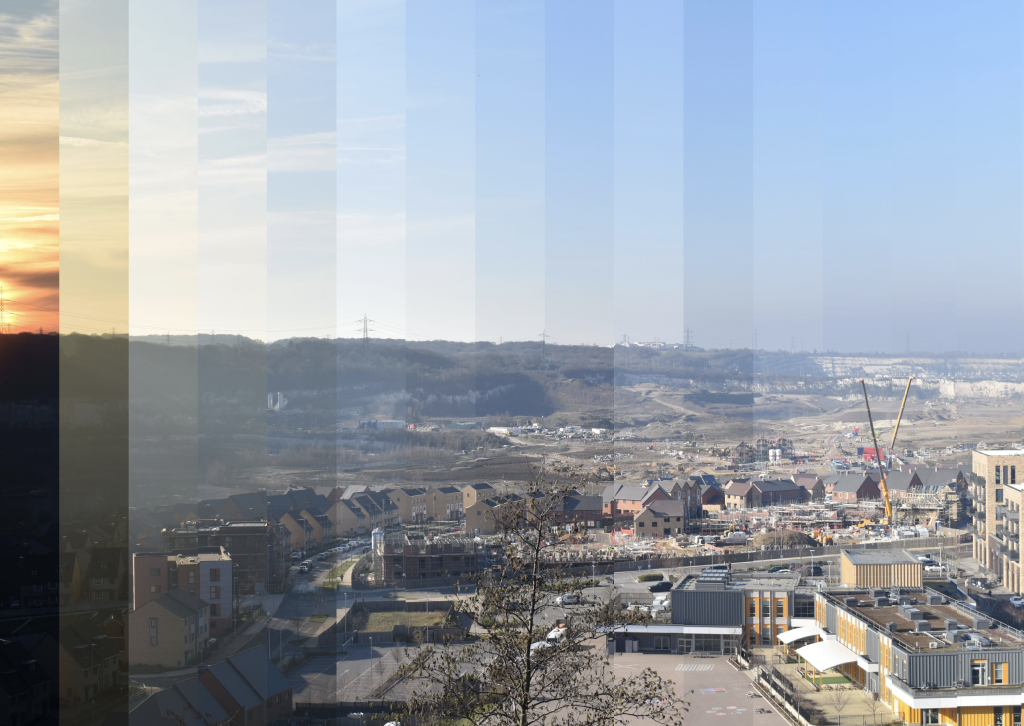
Day Taylor is currently studying level 3 Photography at NKC. She is most interested in landscape photography.
‘The piece presented here is in the form of a rollage. In February, I was granted a two-day residency at Ebbsfleet garden city’s Observatory building where Ebbsfleet Development Corporation’s based, as part of This Must Be the Place project. I completed two shoots there: I began at 9:30am, where I took one photo, every 30 minutes of the Ebbsfleet landscape, continuing with this until 5pm. Once I had retrieved all of these photos, I edited them in Photoshop and cut each photo separately, before combining them to create the final rollage. Typically, the sun sets from east to west. Contrary to this, I decided to make the artistic decision to place the final sunset image on the left side, rather than the right.’
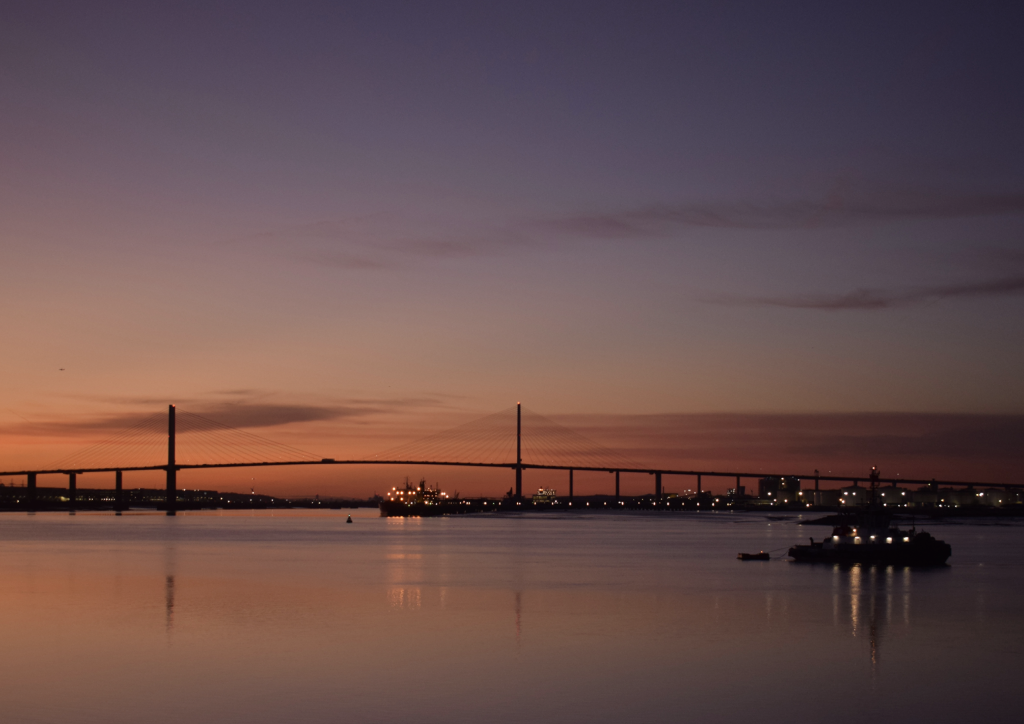
Amber Reville is a Level 3 Photography Student based in Dartford, Kent. She is currently working within the genre of landscape and documentary photography.
‘My recent project was inspired by Rene Magritte’s 1950 painting ‘Empire of Light’. I developed a concept to show how the day transitions into night, highlighting how they coexist at dusk and that they are not seperate at all. My images were shoot during sunset hours, down at the river front in Greenhithe. My work reflects the landscapes of North Kent and inparticular the shore at Greenhithe, the Thames Estary and the iconic Dartford Crossing.’
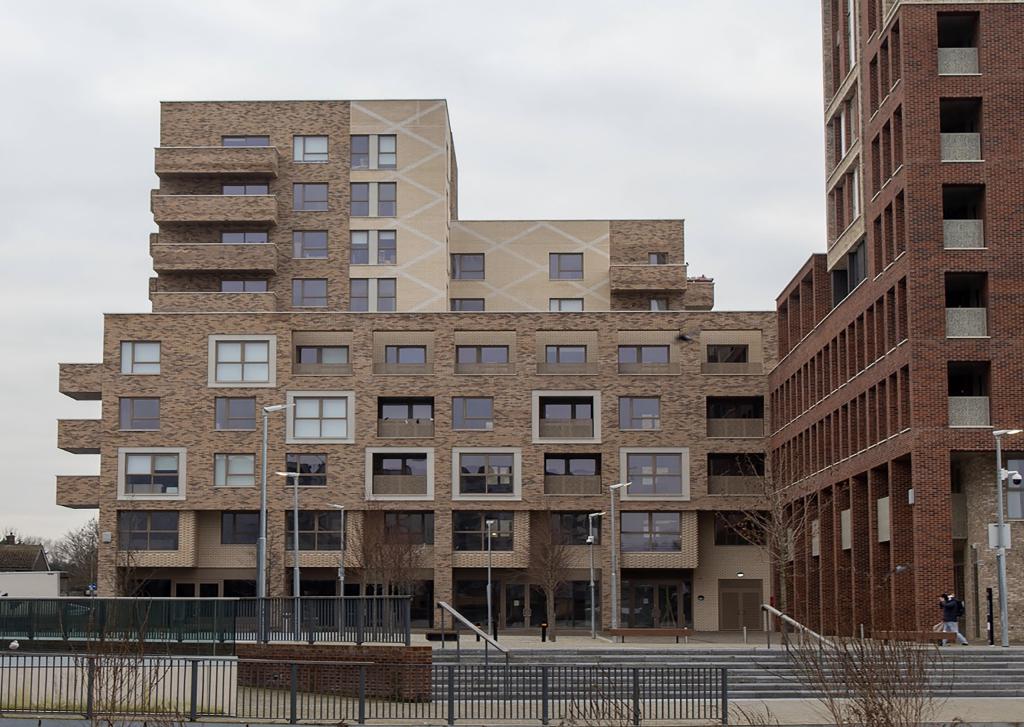
Nikki Hayter is a photography student at North Kent College.
‘My project was based around the development of Thamesmead, which runs along the Thames. I wanted to highlight both and the past and present within my work, showing how it has developed. Thamesmead and Ebbsfleet both share the same stretch of the River Thames and they are also both undergoing major developments. I wanted to draw attention to these areas, the new homes and ways of living.’
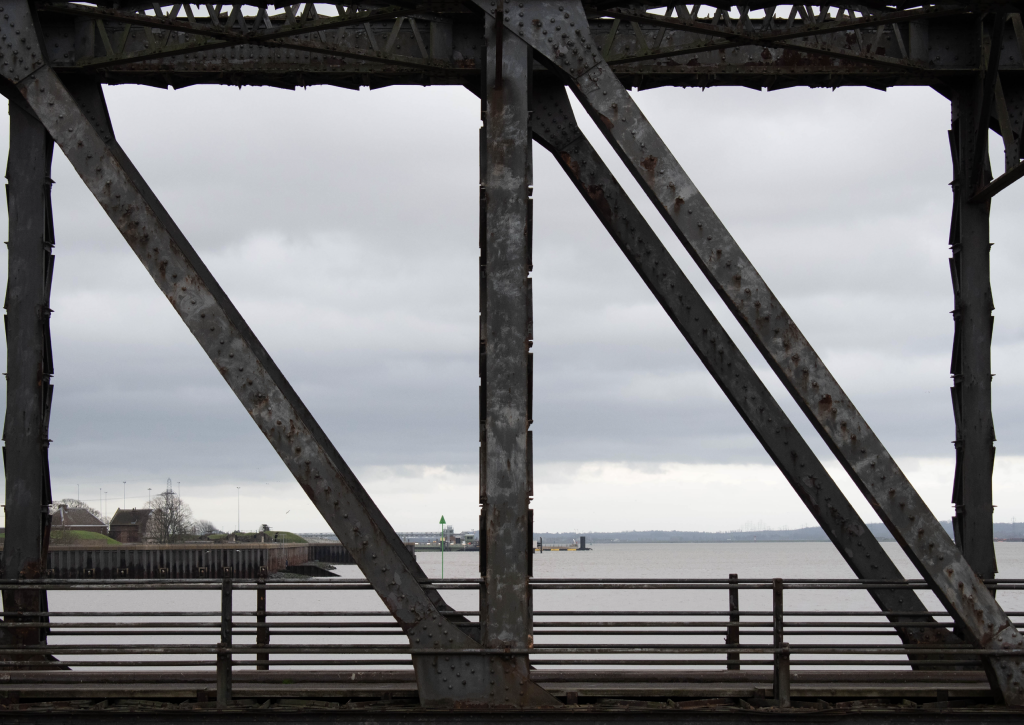
Sarah Stanley is a level 3 Photography student at North Kent College in Dartford. They are interested in landscape and portrait photography.
‘This piece is from a series of landscapes representing some of the factors of climate change in my local area. Called Inevitability, I created them to show the audience the reality of our actions and how if we do not change our ways, the environment will worsen. I wanted to show the viewer how the declining climate of our environment is something that affects everywhere, including Gravesend, and to spread more awareness about this connection due to there not being enough in current day to day media.’
‘I was inspired by Ebbsfleet because I wanted to create works with industrial landscapes that could relate to climate change.’





